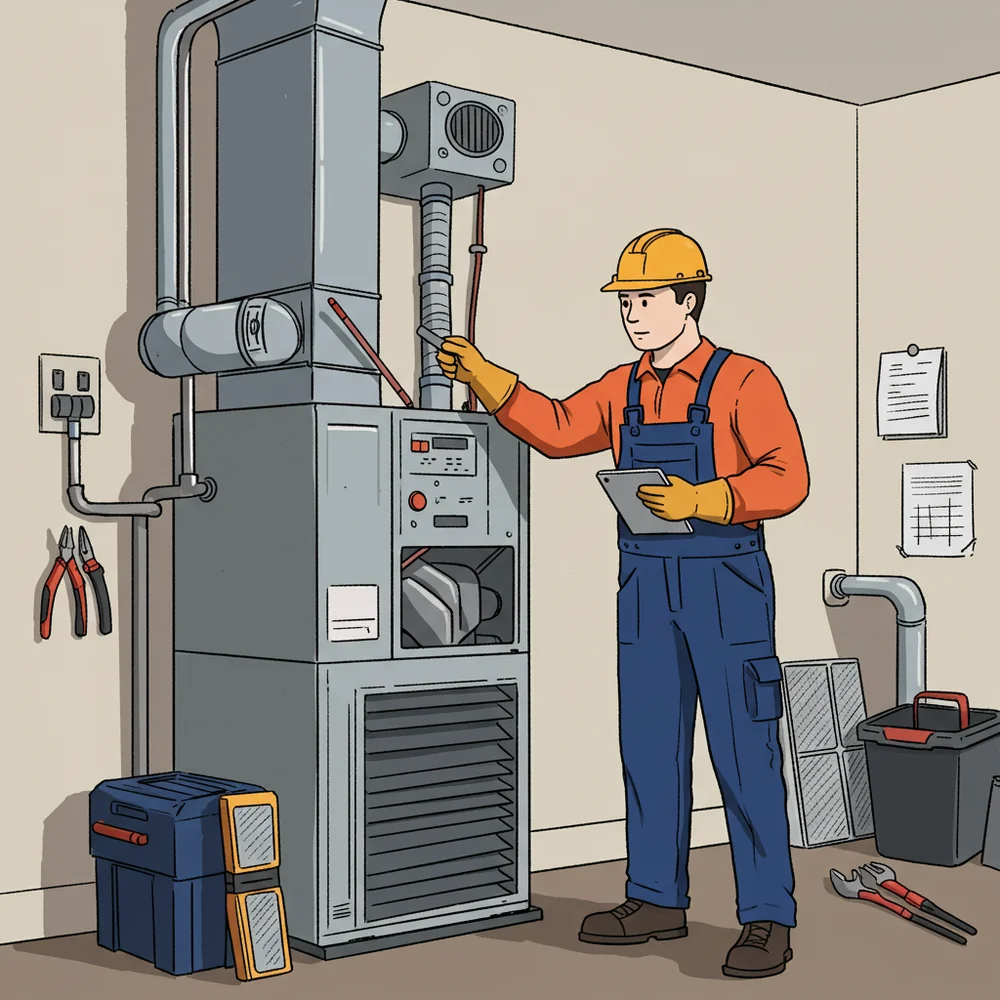
Furnace Maintenance Checklist: Safety, Efficiency & Reliability
Complete Furnace Maintenance Guide
Comprehensive furnace maintenance checklist covering all critical aspects from safety procedures and combustion system inspection to electrical testing and performance monitoring, ensuring optimal furnace operation and safety compliance.
1. Safety & Shutdown Procedures
2. Air Filter & Airflow System
3. Combustion & Burner Assembly
4. Heat Exchanger, Furnace Core, & Flue
5. Electrical & Control Systems
6. Blower, Fan & Motor Components
7. Safety & Limit Devices
8. Combustion Gas & Carbon Monoxide Monitoring
9. Condensate & Drainage System (for Condensing Furnaces)
10. Final Startup, Testing & Documentation
Overall Progress
0% complete
Checklist Progress
0% complete - Ready to download!
Related Checklists
Explore more checklists in the Maintenance Checklists category
AC Maintenance Checklist 2025: Stay Cool & Reduce Energy Bil
Comprehensive air conditioning maintenance checklist covering safety, filters, coils, electrical systems, refrigerant, and performance testing.
HVAC Maintenance Checklist: Prevent Breakdowns & Save Energy
Comprehensive HVAC maintenance checklist covering safety procedures, air filters, coils, drainage, blowers, refrigerant systems, electrical controls, and performance testing.
Preventive Maintenance Checklist for Safety & Compliance
Comprehensive preventive maintenance checklist covering safety, inspection, cleaning, lubrication, and system performance for equipment and facilities.
Fall Home Care Checklist to Prepare for Cold Weather
Comprehensive fall home maintenance checklist covering roof, gutters, heating systems, plumbing, electrical, and winter preparation tasks.
RV Maintenance Checklist for Reliable Trips
Comprehensive RV maintenance checklist covering engine, systems, safety, and seasonal care to keep your recreational vehicle road-ready.
Popular Categories
Most downloaded checklist categories
Audit Checklists
Ensure accuracy and compliance with audit checklists for business, finance, and safety. Organized tools for efficient auditing.
Assessment Checklists
Streamline evaluations with detailed assessment checklists. Ensure accuracy, consistency, and efficiency in academic, workplace, and project reviews.
Car Checklists
Find essential car checklists for maintenance, safety, road trips, and inspections. Stay prepared and keep your vehicle in top shape.
Safety Checklists
Stay safe with checklists for workplace, home, and emergency preparedness. Reduce risks and stay ready for any situation.
Home Checklists
Explore home checklists for cleaning, organization, safety, and maintenance. Keep your home efficient, safe, and clutter-free.
Wedding Checklists
Plan your big day with wedding checklists covering planning, budget, guests, and timeline. Stay organized from start to finish.



